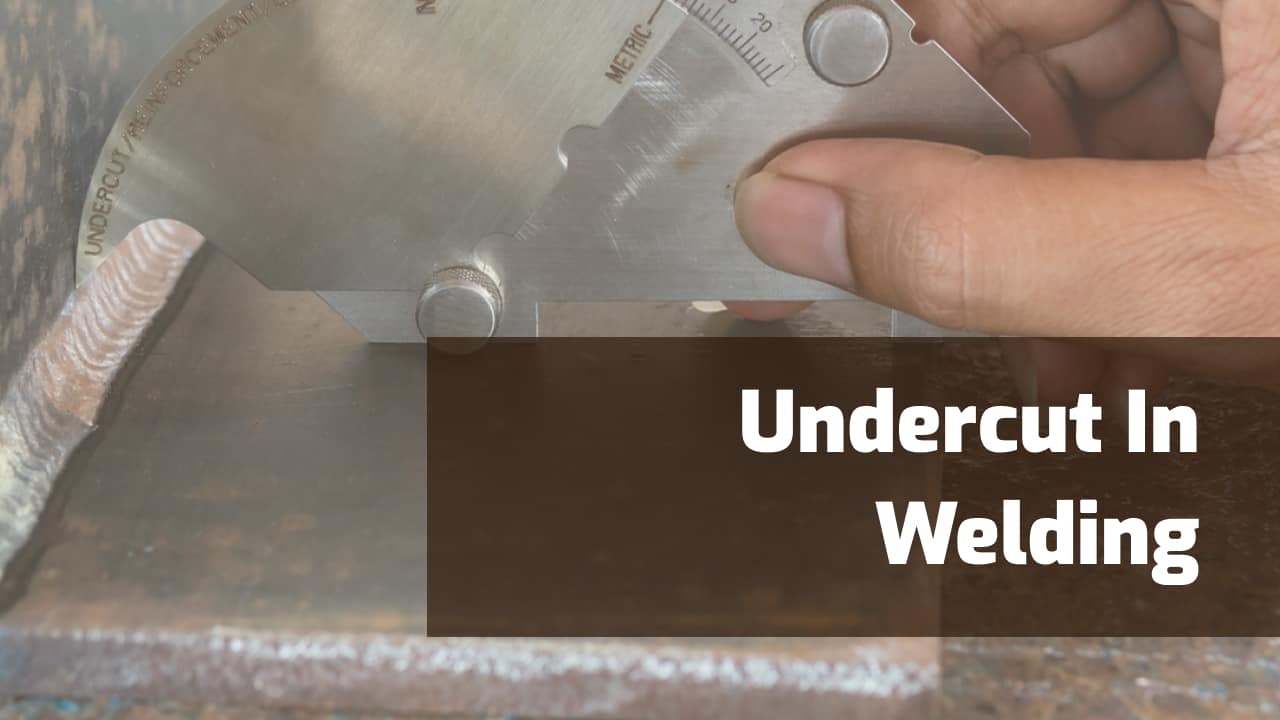Professional Strategies for Preventing Weld Undercut Properly
Professional Strategies for Preventing Weld Undercut Properly
Blog Article
Understanding the Causes and Solutions for Undercut Welding in Metal Construction Processes
In the world of metal manufacture procedures, the incident of undercut welding positions a considerable obstacle that demands a detailed understanding of its reasons and feasible remedies. The complex interaction of various elements throughout welding operations can result in this unwanted sensation, affecting the architectural stability and overall quality of the welded joints - Preventing weld undercut. By dissecting the origin of undercut welding and checking out reliable restorative procedures, producers can boost the requirement of their handiwork and make sure the manufacturing of flawless metal elements
Typical Sources Of Undercut Welding
Frequently overlooked in steel manufacture, undercut welding occurs due to various elements that require meticulous attention and competence to be properly reduced. Furthermore, inappropriate welding strategies, such as using the wrong welding angle or travel speed, can also contribute to damage formation. The option of welding specifications, such as voltage, existing, and cord feed rate, plays a considerable role in the incident of undercut welding.
Influence of Incorrect Welding Parameters
Unreliable welding specifications can considerably endanger the integrity and quality of bonded joints in metal manufacture procedures. The effect of incorrect welding parameters manifests in different means, bring about architectural weak points and defects in the bonded components. One critical element impacted by inappropriate welding specifications is the infiltration deepness of the weld. Insufficient warm input due to reduced welding currents or exceedingly high traveling speeds can result in inadequate fusion between the base metals, resulting in incomplete joint infiltration and deteriorated bonds. Alternatively, extreme heat input brought on by high welding currents or slow-moving traveling rates can cause burn-through and excessive reinforcement, creating a breakable and unstable weld framework. Furthermore, wrong parameters such as inappropriate voltage setups or inaccurate electrode angles can add to unpredictable weld grain accounts, absence of combination, and boosted opportunities of issues like undercutting. Precise interest to welding parameters is vital to guarantee the production of top notch welds with the desired mechanical residential or commercial properties and structural honesty.
Effect of Improper Lantern Angle
Incorrect torch angle in welding operations can dramatically impact the quality and stability of the last weld joints in steel fabrication processes. The lantern angle plays a critical role in identifying the warmth input and distribution during welding. When the lantern angle is inaccurate, problems such as undercutting can occur. Damaging is a typical welding issue where a groove forms along the weld toe, compromising the joint and jeopardizing its architectural integrity.
A torch angle that is also steep can bring about insufficient penetration, insufficient blend, and raised spatter. On the other hand, a torch angle that is as well superficial can result in too much infiltration, burn-through, and distortion of the base material. Preventing weld undercut. Appropriate torch angle is check out this site important for making sure consistent weld quality, toughness, and look
To stop damaging and other flaws triggered by incorrect lantern angles, welders must be educated to keep the proper torch angle throughout the welding procedure. Regular monitoring and adjustment of lantern angles during welding can help achieve audio welds with minimal issues.
Function of Inadequate Welding Methods

One more aspect of insufficient welding strategies is inappropriate weld preparation. Poor cleansing of the base steels, incorrect joint layout, or not enough side prep work can all contribute to damage welding. Additionally, poor shielding gas insurance coverage or making use of the wrong sort of gas can cause incomplete combination and the development of undercut issues.
To resolve the duty of poor welding strategies in steel construction procedures, it is crucial to provide extensive training for welders. Proper education and learning on welding criteria, joint prep work, and protecting gas option can help stop undercut welding and ensure top notch welds in metal construction tasks.
Reliable Solutions for Undercut Welding
Dealing with undercut welding in metal construction requires applying reliable services to boost weld top quality and architectural integrity. One of the primary remedies to combat undercut is to adjust welding specifications such as voltage, current, and take a trip rate to make sure appropriate heat input and fusion. By fine-tuning these settings, welders can prevent too much melting of the base steel and filler material, reducing the chance of undercut development.
Additionally, correct joint prep work is essential in preventing undercut. Making certain clean base metal surface areas devoid of contaminants and making use of the why not find out more appropriate bevel angle can aid promote better weld infiltration and decrease the threat of undercut - Preventing weld undercut. Using suitable welding techniques, such as weaving or oscillating the lantern, can also aid in dispersing warm evenly and filling the weld joint effectively, lessening the possibility of undercut issues
In addition, choosing the right welding consumables, including electrodes and filler steels, is vital in alleviating undercut. Using materials with proper chemical make-ups and mechanical buildings can add to attaining sound welds with marginal undercut. Regular evaluation and quality assurance procedures ought to also be applied to identify and resolve undercut issues quickly, guaranteeing the total integrity of produced metal components.

Final Thought
To conclude, understanding the causes and options for undercut welding in metal manufacture procedures is important for achieving high-quality original site welds. By attending to usual causes such as inaccurate welding specifications, improper torch angle, and insufficient welding methods, welders can avoid damaging and ensure solid, sturdy welds. It is essential to focus on these aspects and apply efficient remedies to boost the overall welding procedure and end product high quality.

Report this page